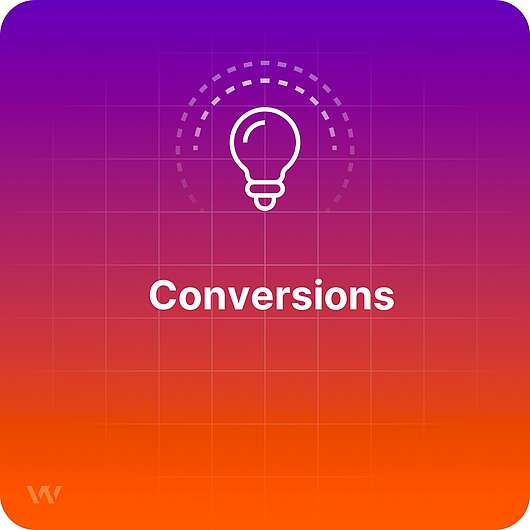- Why Us?
- Features
White Label
For SaaS Platforms & Agencies
Provide our complete analytics suite to your clients, directly within your own interface and with your/their own branding. Discover Analytics-as-a-Service and White Label Analytics. Great benefit, minimal effort.
- Pricing
- White Label
- Success Stories
- ResourcesGetting Started
Conversions

TL;DR
Conversions represent the marketing metric meant to measure the point at which a website visitor or potential customer takes the desired action, this way transforming itself from a simple viewer into a buyer, subscriber, follower, etc. In the vast majority of cases, the number of conversions dictates the success of a business.
About Conversions
The conversion is a marketing metric that defines the number of visitors or users who got convinced to take a certain action that resulted in the benefit of a business. For example, if two people enter on an e-commerce website and one decides to leave while the other decides to buy a product, the second one counts as a conversion.
Conversions are different for each business, as one might consider a purchase a conversion, while others can count a subscription or a registration as a conversion. It all depends on the type of business and the preset goals.
In the app, users decide on their own which web pages count as conversions and are able to configure the ones that they consider important for their business, to be counted as conversions in the Overview Dashboard and in the Pages Menu → Conversions.
Why are Conversions Important?
The conversion is one of the most crucial marketing metrics, as it defines the success of a business or marketing campaign. Conversions don’t always mean a purchase, they can also represent the number of people who submitted a contact form, opened an email, signed a document or whatever action finalizes in accomplishing al goal that is important for the business.
What are the most common conversion methods?
According to Wikipedia here are the most frequently used conversion techniques:
- Call to action
- Recommendations
- Targeted offers
- Retargeting
- Chat
- Reviews and Ratings

